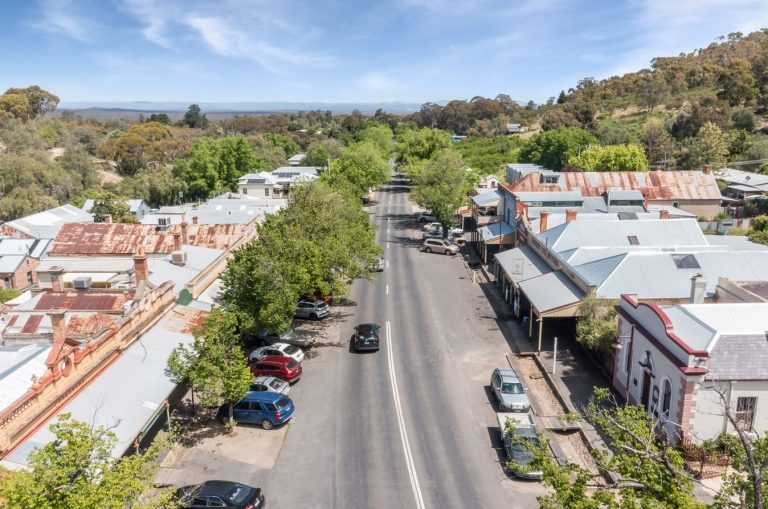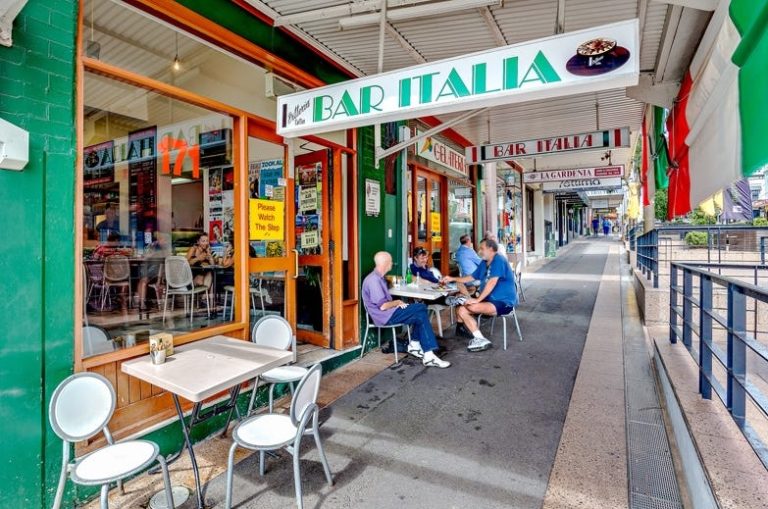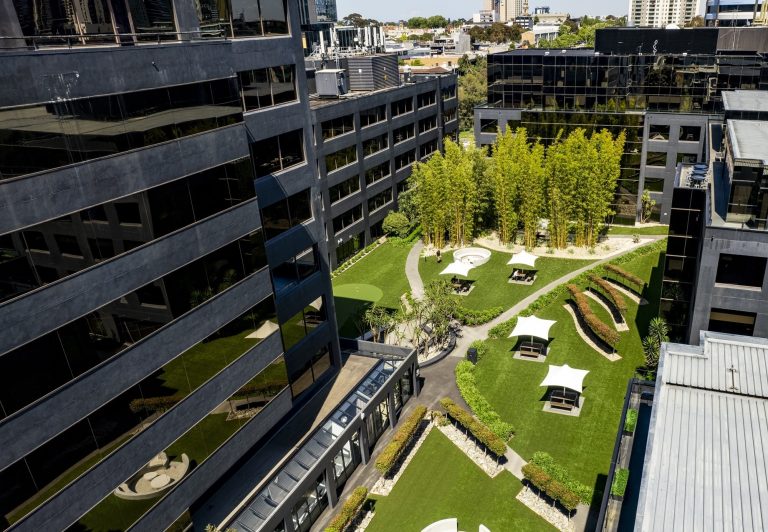How to: Grow edibles in the office
An increasingly popular concept, office greenery is now flourishing further to include sowing edibles.
So don’t be surprised if fruit, vegetables and herbs start ploughing into your office space or its car parks and rooftops – just enjoy the chance to pick fresh, healthy ingredients for your next meal.
Here’s some great advice on setting up an office garden with edible plants from Bunnings’ horticulturist Mill Wallasvaara and from Australian Ecosystems’ innovation and communication manager, Eily Schulz.
How do I establish a garden in my office?

You don’t need to live or work in the country to enjoy freshly grown greens. Picture: Getty
Not surprisingly, sunshine, water and wind are all crucial to the success of an office garden, especially those planted outdoors in car parks or rooftops.
Ms Wallasvaara added that gardens should also be planted well away from direct heating and cooling systems.
Tenants may also need to run their greenery plans past their landlords.
1. Pick a well-lit space
“For best results, select a location that has plenty of natural light which will help your plants thrive,” Ms Wallasvaara explained.
“For indoor plants, choose those that can tolerate lower light conditions and don’t require direct sun, especially if you have limited access to natural light.
“On this note, grow lights can be installed to provide artificial light but herbs and vegetables definitely require a sunny location that gets direct sunlight to grow.”
Ms Schulz concurred that natural light was a big consideration for indoor gardens and advised gardeners to avoid south-facing sunlight.
“When you’re putting your plants somewhere inside, ensure you can see the sky,” she said.
“If you can see a significant amount, it should be fine to plant your garden at this point.”
2. Plan how you will water the plants

Surround yourself with greens in your office and your mood and energy will soon improve. Picture: Getty
“The key thing to the success of our urban farm garden has been using self-watering beds,” Ms Schulz explained.
“You don’t really need much expertise at all to grow vegetables in a self-watering bed because the plants thrive really well in these places and will definitely look after themselves.
“These beds also mean people don’t have to come in all the time and water the plants which is particularly important as not everyone’s working in the office right now.
“But you will still need access to water mains.”
Ms Schulz said most of the water in the urban farm’s above-ground self-watering beds was held at the bottom with the plants sucking the liquid up through the soil.
“This means that in winter in Melbourne, you never have to water your plants and in summer, you only have to water them once a week,” she said.
3. Check the environment conditions including wind and sun
Gardens growing on rooftops and balconies could easily be ruined by excessive winds, according to Ms Schulz.
“If there’s a lot of wind, then planting a garden might be more difficult as this can be really harsh on plants and suck all the moisture away,” she said.
“So with the Skyfarm, it’s been really important to install windbreaks, which are a kind of fencing with hessian strung over them.
“This fencing then breaks up the wind before it hits the garden.”
4. Create a watering roster
Start with setting up a staff roster to ensure everyone knows who is responsible for what detail in your garden, Ms Schulz said.
Otherwise, plants could easily end up being under or overwatered by well-meaning or uncaring staff.
“One of the biggest killers of indoor plants is overwatering them,” she explained.
“Being indoors, these plants don’t get enough sunlight and wind to wick – or absorb – the water away so if they’re overwatered, they just drown.
“Something like a roster is a good way to take care of that.”
5. Keep indoor plants clean by hand
Indoor plants in particular needed special care, Ms Wallasvaara explained.
“House plants will last indoors for years if well cared for,” she said.
“But these plants will eventually start to collect dust on the leaves so take them to a spot where they can be watered overhead with a hose or watering can to help wash the dust off.
“House plants with larger leaves can be hand cleaned with a damp cloth.”
6. Use the right fertiliser
Ms Schulz added that good soil and fertiliser were also crucial for plants’ success, with outdoor gardens needing compost.
“Our offices are attached to a coffee roastery so we compost the coffee grounds, scraps from the garden as well as scraps from the office kitchen such as banana peels and tea bags,” she said.
Ms Wallasvaara recommended using liquid fertiliser to promote healthy plant growth but added that this should be avoided for interior office spaces.
“Another option would be to take plants outside when applying this fertiliser, ” she said.
“For an edible garden, some regular maintenance including replanting each year is also needed to keep plants healthy and looking their best, but for this, you’ll need to know which ones are perennial and which ones are annual.”
Edible green growth in an industrial car park

Melbourne’s Skyfarm has transformed a former CBD car park into an energy-efficient orchard, complete with a cafe and event spaces. Picture: Melbourne Skyfarm
Ms Schulz, admitted she knew nothing about gardening when she first heard of the company’s plan to free up two car park spaces and create an urban farm.
Now in charge of the unique project, she has surprised herself with how much she has learnt about gardening and how well the 18sqm urban farm in Port Melbourne has succeeded.
In its first six months in 2019, it produced more than 300kg of herbs, fruit and vegetables and is now considered the ideal test garden for the city’s Skyfarm, in which a former CBD car park is being recreated into an energy-efficient orchard, complete with a cafe and event spaces.
Ms Schulz believes all workspace gardens can enjoy the same success, even if staff know little about gardening.
Office garden benefits
From being far cheaper than those in supermarkets to bringing stressed staff together amongst the greenery, workspace gardens offer abundant positive possibilities.
1. Improves camaraderie
Green spaces can have a positive effect on wellbeing and lessen the stress often felt in workspaces, according to Ms Wallasvaara.
“Plants bring a sense of calm to the workspace,” she said.
“Green spaces also help break up what can often be stark office spaces and in doing so, improve air quality and create a more inviting space to work in.”
Ms Schulz added that office gardens helped bring staff together in a calm, green area.
“Office gardens are somewhere for people to gather and they help create a sense of space and a sense of community and home while still being in a work environment,” Ms Schulz said.
“As well, you’ll always have people in your office who know a lot about gardening as well as people that know nothing, so establishing a garden in your office can be a really good knowledge-sharing space.
“Veggie gardening also gets people involved in their workspace as they take care of plant seeds and seedlings and get in a harvest.”
“In this way, office gardens offer a really great way for people to become invested in the place where they work.”
2. Cheaper, fresher greenery

Staff can have their pick of freshly grown fruit, veggies and herbs and save money into the bargain. Picture: Melbourne Skyfarm
“High-value herbs are the most expensive thing you can buy at a supermarket in terms of vegetables,” Ms Schulz said.
“In Woolworths, it’s $3 for a tiny packet of basil or rosemary, or for a bundle of silverbeet.”
Ms Schulz added that office-grown greenery was also guaranteed to be fresher than those from supermarkets.
“The greens we get from supermarkets were probably picked days ago and might be from Queensland, Western Australia, or even from California,” she said.
“But with edible office greenery, you can enjoy the experience of picking something and eating it just as you pick it, which is a really big boon for staff.
“Having edible greens on hand all the time also means you can pick some parsley to include in your salad or your sandwich or if you know what you’re going to have for dinner that night, you can just go and pick it from the garden.”
3. Easy to grow and low maintenance
“Edible greens like herbs are incredibly easy to grow and they’re really low maintenance,” Ms Schulz explained.
“It’s also very easy to set up office gardens yourself.”
What are easy edibles to grow?

In its first six months in 2019, the test farm for Melbourne’s Skyfarm produced more than 300kg of herbs, fruit and vegetables. Picture: Melbourne Skyfarm
For both indoor and outdoor office spaces, herbs are definitely the easiest edibles to grow, followed by leafy greens.
Ms Wallasvaara added that strawberries and tomatoes were a great option for outdoor gardens with plenty of direct sunlight.
“They don’t require much space either as you can grow them in containers,” she said.
Herbs
“Parsley, thyme, basil, coriander and mint all grow quickly and easily and smell great,” Ms Wallasvaara said.
Ms Schulz concurred that these herbs were very easy to grow and added that basil was a great possibility.
”Basil is incredibly easy to grow and really low maintenance,” she said.
“Then there are hardy, woody herbs that will grow and thrive really well all year round, such as oregano, rosemary, thyme and sage.”
Leafy greens
Ms Wallasvaara described lettuce as a very easy plant to grow with plenty of different possibilities to choose from.
“There are lots of lovely colourful varieties that create great texture and will be a vibrant addition to your office garden,” she said.
Meanwhile, Ms Schulz recommended silverbeet and bok choy as being both easy to grow and productive.
“Silverbeet is my number one vegetable for early starter gardeners as it’s so versatile and it will grow really fast as well as being low maintenance,” she explained.

More offices adding a garden area. Picture: Getty







